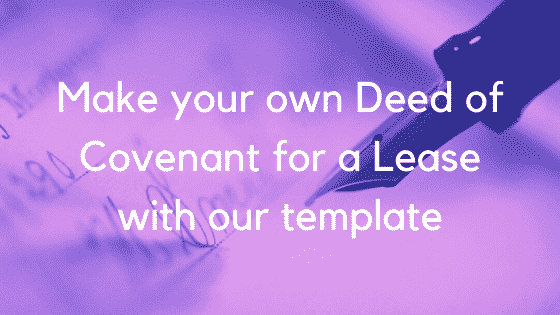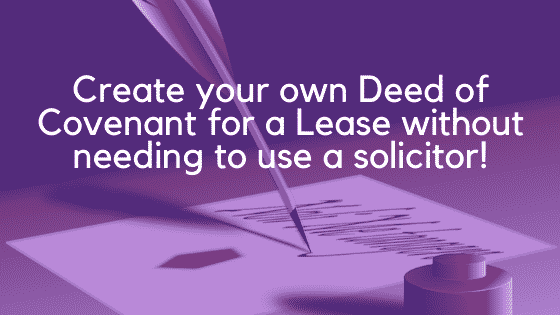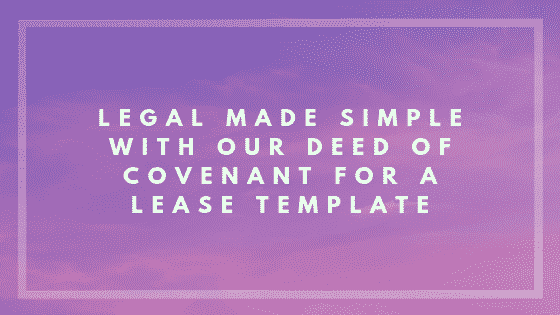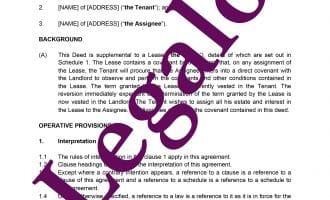Deed of Covenant for a Lease
Our Deed of Covenant for a Lease template:
- UK-solicitor drafted for reliability
- Simple to edit and complete
- Use when the lease requires one on assignment
- Can be completed within a few minutes

How Does It Work?
-
1. Download
-
2. Edit
-
3. Print
-
4. Sign
Our Deed of Covenant for a Lease template is for use where one party is making a promise to the other to do something.
A Deed of Covenant for a Lease
In this case, the new owner of a long leasehold flat will be promising the landlord:
- that the new tenant will pay the ground rent and service charge, and
- comply with any other relevant covenants in the lease.
You will need a deed of covenant only if the lease specifically requires one when one tenant is selling (“assigning”) the remainder of the term of the lease to someone.

This Deed of Covenant template comes in two different versions (but you only pay for one):
- one is appropriate in the context of conveyancing of long leasehold property, where needed in order to ensure a purchaser of a long lease agrees to pay to the landlord any service charges that may be levied against a leasehold property for such things as paying for the repair and maintenance of common areas; and
- the other is for the loan of goods e.g. a machine that a potential buyer is to test or evaluate.
Once purchased, you can download the version that you need and the guide that covers both. Then simply follow the relevant section of the guide for the Deed of Covenant for a Lease. With the help of the guide, you will find the deed of covenant quick and simple to complete. Below you can read a brief preview of the guide to filling out the template. This will give you a good understanding of what it covers.
If you need any other documents for the assignment of the lease, see our discount pack containing everything else you’ll need (except for a deed of covenant).

Clauses in this Deed of Covenant for a Lease
Party clauses – You will need to insert the names and addresses of party 1 (the Landlord), party 2 (the Tenant – i.e. the current tenant who is selling their lease) and party 3 (the Assignee – i.e. the new tenant who is buying the lease) and, where any of them is a company, the company number and country of incorporation.
Background – This section just sets out why you are signing this deed of covenant for a lease and what its effect is. That is: that the new tenant, the Assignee, will take over the outgoing tenant’s obligations under the lease.
Key Numbered clauses
The following are the main clauses of note. There are also a couple of other minor clauses about the law of the contract, etc. They are not worth commenting on here. However the guide that comes with the template covers them in full.
1. Interpretation – This clause has some basic rules about the interpretation of the wording of the agreement.
2. Covenant – This is the main clause in the deed of covenant for a lease. It states that the Assignee takes over the Tenant’s obligations under the lease. If the Tenant is currently in breach of any provisions, then the Assignee will take over that liability, for example if the Tenant were behind with payments of the ground rent or service charges.
The Schedule – Insert the details here of the lease. Cover its date, the parties to it, its term and the address of the premises.



